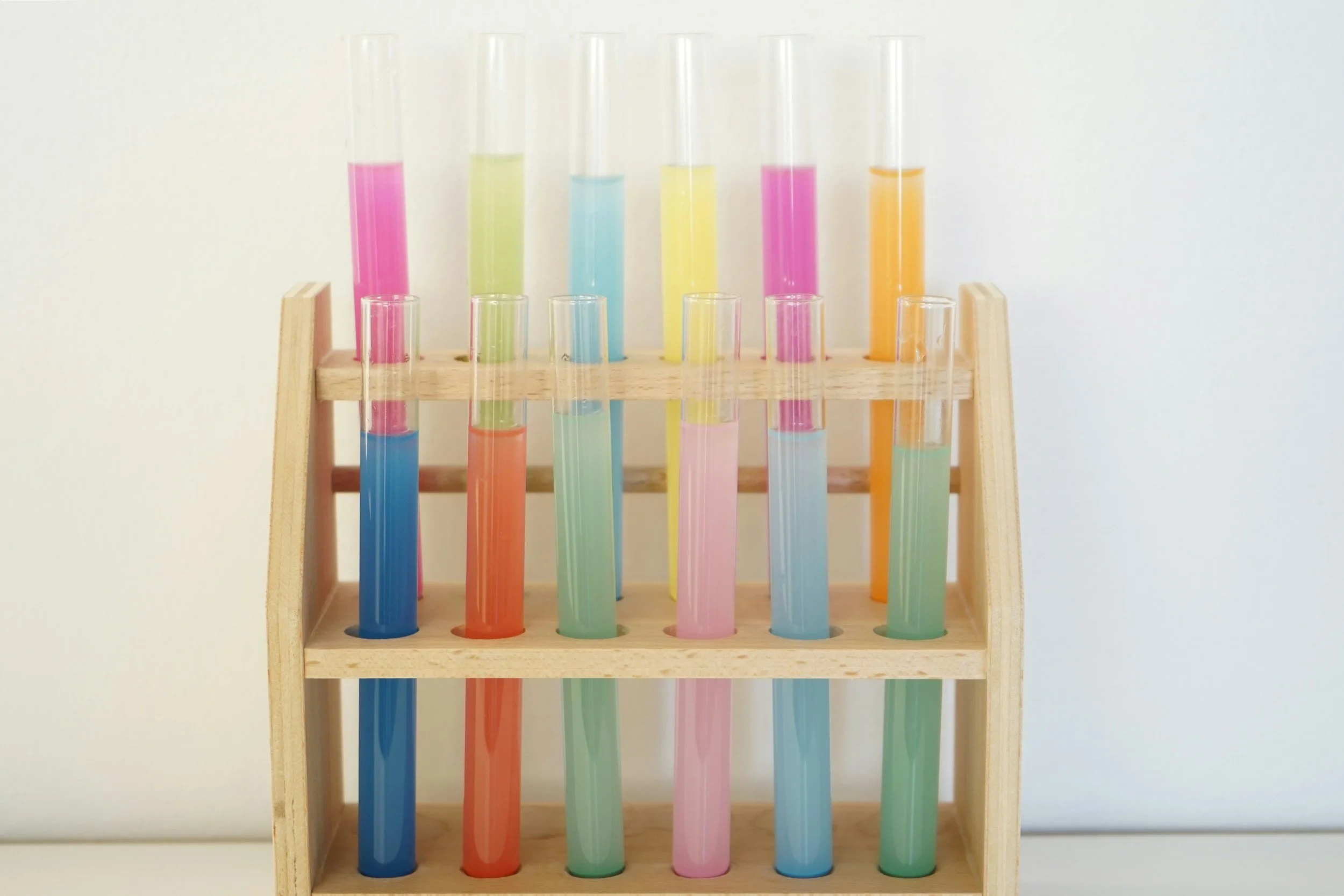
General Chemistry 1
Below are all the topics covered within the course. Each topic will have an associated lesson and then problem set with worked, step-by-step solutions.
1. What is Chemistry, and does it Matter?
2. The Periodic Table
3. General Chemical properties of the Elements
4. Experimentation: Qualitative and Quantitative Analysis
5. The International System of Units (SI System): Understanding Units and Derived Units
6. Working with Exponents
7. Scientific Notation
8. The SI Prefixes
9. Unit Conversions/Dimensional Analysis
10. Accuracy versus Precision in Experimentation
11. Measurement: Significant Figures
12. Overview: Topics 1-11
13. Atomic Theory
14. Theories of Atomic Structure: Electrons, Protons, and Neutrons
15. Atomic Numbers and Atomic Masses
16. The Mole
17. Overview 2: Topics 13-16
18. Nuclear transmutation
19. Radioactivity and its Different Forms
20. Nuclear Fusion and Fission
21. Phases of Matter and Solutions
22. The Covalent Bond
23. Ions and the Ionic Bond
24. The Molecular Formula and Naming of Chemical Compounds
25. Polyatomic Ions and Oxidation States
26. Overview 3: Topics 18-25
27. The Chemical Equation: Stoichiometry and Balancing Chemical Equations
28. Types of Chemical Reactions Part 1
29. Types of Chemical Reactions Part 2
30. Molecular Weights/Molar Masses
31. Limiting Reactants and Reagents
32. Yields: Theoretical and Percent and Percent Error
33. Percent Composition of Compounds and Solutions
34. The Empirical Formula
35. Overview 4: Topics 27-34
36. Concentrations of Reagents/Reactants in Solution
37. Dilutions
38. Introduction to Acids and Bases
39. Stoichiometry in Solution and Neutralization Reactions
40. Titrations
41. Electrolytes
42. Ionic equations and Net Ionic Equations
43. Precipitation Reactions
44. Oxidation and Reduction and Intro to Redox
45. Redox Reactions in Solution: Redox Stoichiometry
46. Balancing Redox Reactions, Half-Reactions
47. Balancing Redox Reactions in Acidic Solutions
48. Balancing Redox Reactions in Basic Solutions
49. Overview 5: Topics 36-48
50. Electromagnetic Energy and the Electromagnetic Spectrum
51. The Atomic Line Spectra
52. The Balmer-Rydberg Equation
53. Particle and Wave Behavior of Matter
54. Basic Quantum Mechanics and its Application in Chemistry
55. The Wave Function and Quantum Numbers
56. Construction of Electron Orbitals using Quantum Mechanics
57. Electron Spin and the Pauli Exclusion Principle
58. Electron Configuration of Atoms
59. The Nuclear Effective Charge, intro to Electronegativity
60. Overview 6: Topics 50-59
61. Introduction and formation of Molecules
62. The Octet Rule
63. Covalent Bonds and their Strength
64. Polar Covalent Bonding
65. Lewis-Dot Structures
66. Formal Charge
67. Resonance
68. Understanding Bonding through Orbitals; Valence Bond Theory
69. Molecular Geometry and the VSEPR Model
70. Hybridization in Bonding
71. Creating Molecules through Orbital Overlap
72. Understanding Bonding through Orbitals; Molecular Orbital Theory
73. Combining both MO Theory and VB Theory
74. Overview of Molecular geometry and VSEPR Valence Bond Theory
75. Ionic Bonds
76. Ionic Solids
77. Lattice Energy
78. Overview 7: Topics 61-77
79. Energy Conservation, Work
80. The Heat of Reaction Enthalpy
81. Exothermic versus Endothermic Reactions: Changes in States of Matter
82. The Standard State
83. Hess’s Law
84. Bond Dissociation Energy
85. Standard Heat of Formation
86. Heats of Combustion
87. Entropy
88. The Concept of Free Energy
89. Calorimetry
90. Overview 8: Topics 79-89
